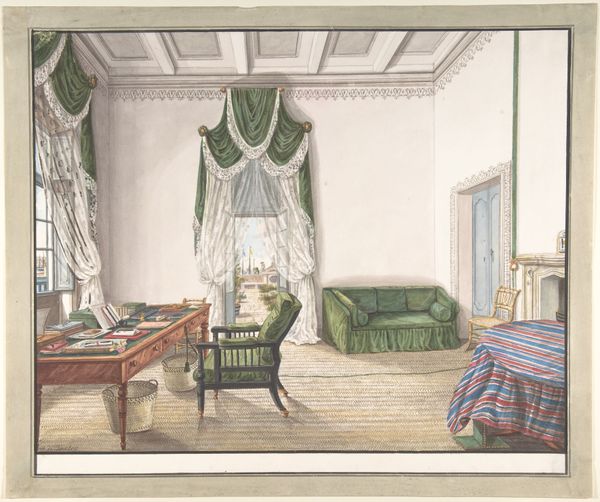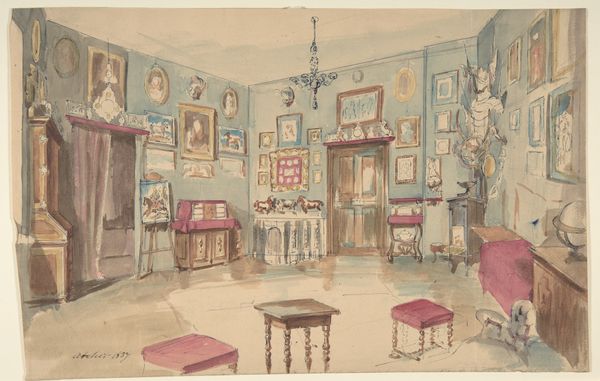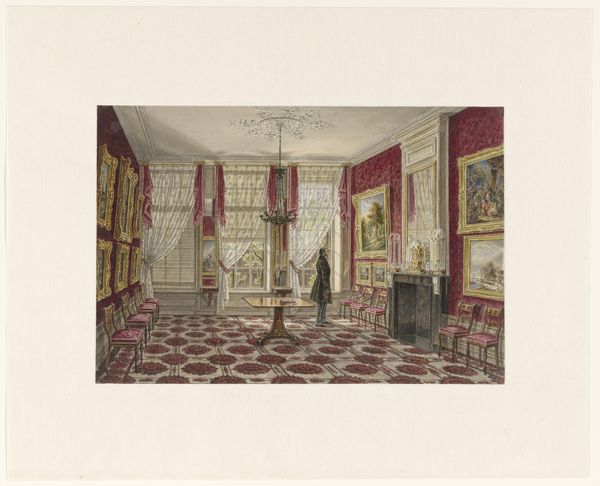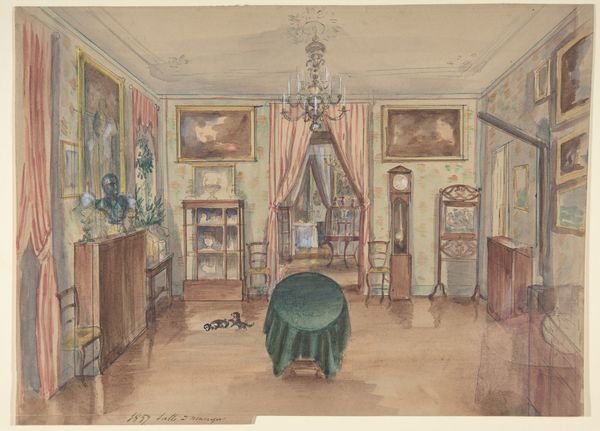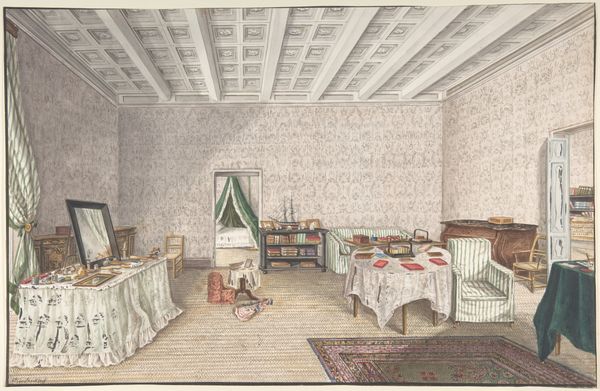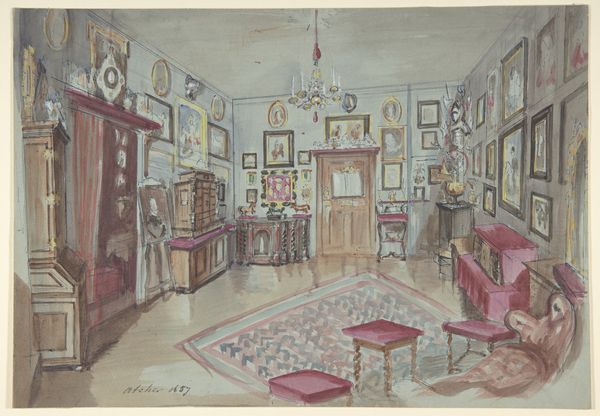
drawing, print, watercolor
#
drawing
# print
#
watercolor
#
romanticism
#
history-painting
#
academic-art
#
watercolor
Dimensions: image: 9 1/8 x 11 15/16 in. (23.2 x 30.3 cm) mount: 9 3/8 x 12 3/16 in. (23.8 x 30.9 cm)
Copyright: Public Domain
Curator: This work, known as "Design for Interior," is from the period 1800-1900. It's held here at the Metropolitan Museum of Art. Created with drawing, print and watercolor, it seems intended for a patron seeking something within the romanticism and academic art styles. Editor: It gives me a strange, enclosed feeling. The light is very subdued, the color palette limited to muted greens and browns... It feels opulent, but oppressive. Look at the number of portraits, gazing back. Curator: Absolutely. This design speaks to the aesthetics of the time, especially the emphasis on domestic spaces as showcases of status and taste. The display of portraits was a clear declaration of lineage and social standing, a sort of personal museum of the self. Editor: Exactly! And there's a deliberate artifice at play here, too. The interior almost looks staged, more a tableau vivant than a space for actual living. Note how even the objects are arranged, they're like characters placed in a theatrical presentation, performative rather than personal. The room feels claustrophobic! Curator: I would agree. This "stage set" offers a window into the visual rhetoric employed by elites to project power. The careful arrangement of objects, portraits, and even the fall of light all serve to create a carefully constructed image of wealth, intellect, and authority. Consider how these images would impact visitors - projecting their authority through this planned vision of space and self. Editor: Which feels exclusionary, right? This level of self-curation speaks to a society sharply divided by class. It suggests an exclusive world carefully guarded against those who weren't part of the circle. It almost screams about the anxiety of protecting privilege. I can't help but wonder who was meant to see this, and how they were meant to react. Curator: Precisely. The visual language serves not only as an emblem of self-promotion but also as a marker of social distinction, delineating the boundaries between those who could claim belonging and those excluded. Editor: I see so much hidden in plain sight! Thanks, this little deep dive opened it up so well for me. Curator: It's remarkable how much art of interior designs communicate of past systems.
Comments
No comments
Be the first to comment and join the conversation on the ultimate creative platform.
